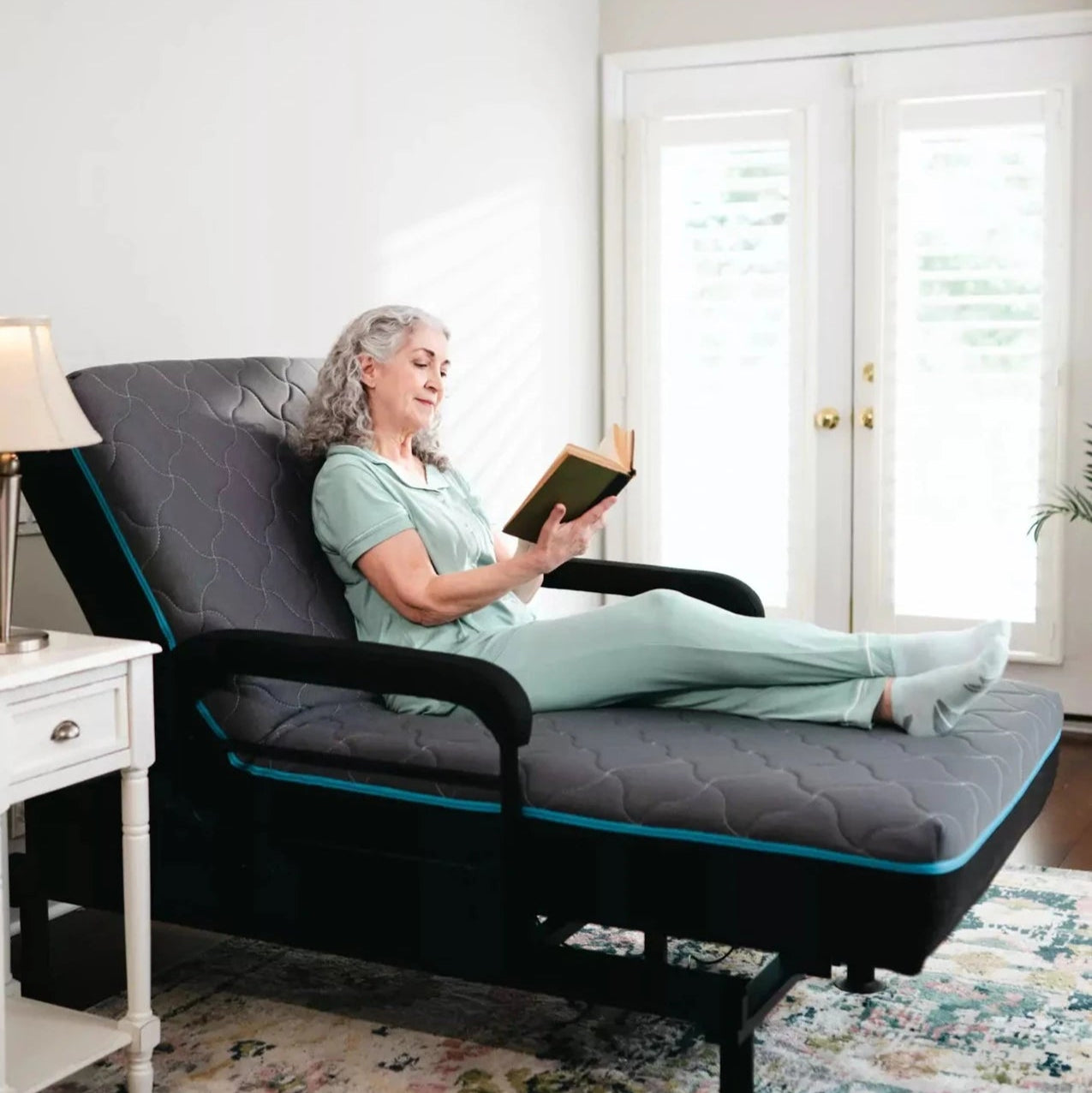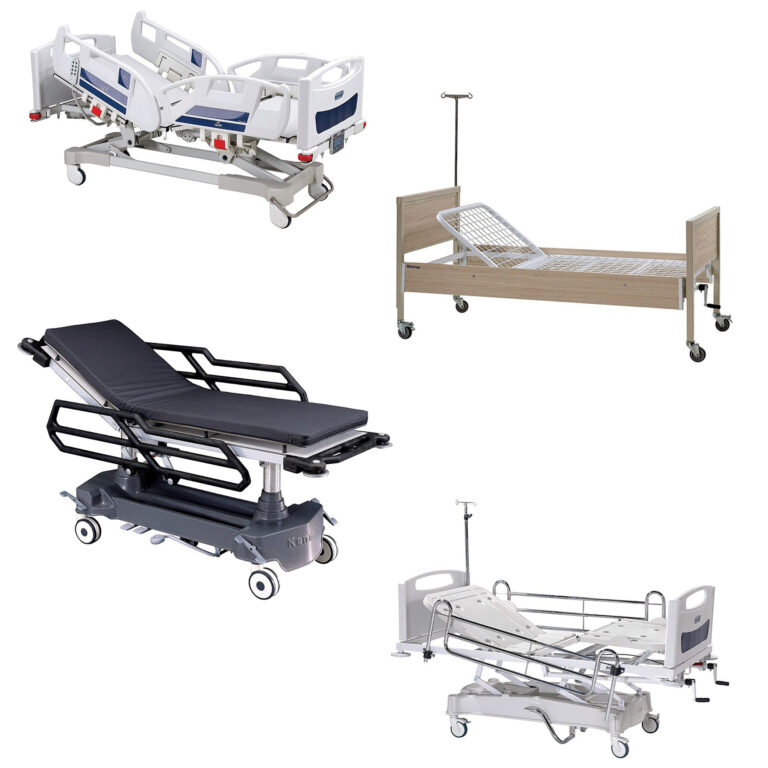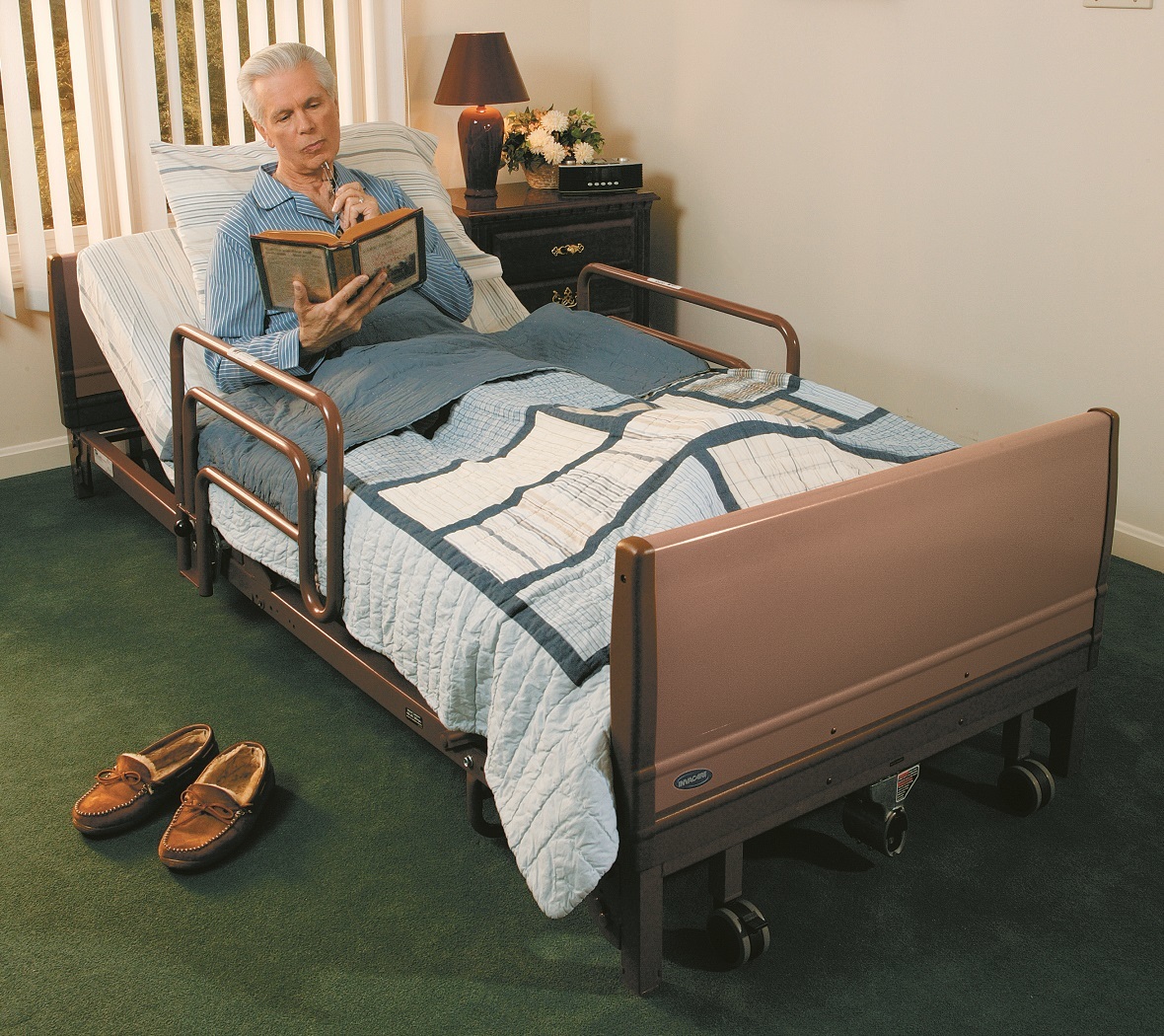Hospital Beds For Home Use Can Be Fun For Everyone
Wiki Article
5 Easy Facts About Hospital Beds For Home Use Explained
Table of ContentsHospital Beds For Home Use for BeginnersNot known Facts About Hospital Beds For Home UseThe smart Trick of Hospital Beds For Home Use That Nobody is Talking AboutFascination About Hospital Beds For Home UseThe Ultimate Guide To Hospital Beds For Home UseNot known Details About Hospital Beds For Home Use A Biased View of Hospital Beds For Home Use
There are three main kinds of health center beds: manual, semi-electric, and fully-electric. Nevertheless, even more kinds of clinical beds exist and they are listed here. These beds utilize hand cranks to change the bed's elevation and raise and reduce the head and the foot. Hand cranks are typically found at the foot of the bed and call for an individual that is physically with the ability of operating.
Semi-electric beds have an electric motor to increase and lower the head and foot parts of the bed. Individuals and caretakers readjust the placing by pushing buttons making use of a hand necklace. The height of the bed is changed manually with a hand crank. Full-electric beds have an electric motor that can raise the head and foot sections of the bed in addition to the entire height and positioning of the bed.
The Ultimate Guide To Hospital Beds For Home Use
There are several kinds of healthcare facility beds, each designed to satisfy specific individual requirements. Below are some common types: This is the most usual kind of hospital bed, designed for general clinical usage.Lower to the ground than a common bed. This sort of bed is made for larger clients, with a bigger frame and greater weight ability than a conventional bed. This kind of bed is developed especially for children, with smaller dimensions than a standard bed. Special functions such as complete length side rails and animation style.
This sort of bed is developed for seriously sick people that call for open surveillance and specialized medical devices such as ventilators and infusion pumps. This kind of bed is made for usage during labor and distribution, with flexible placements and features to sustain the mommy and infant throughout the birth procedure.
The 7-Minute Rule for Hospital Beds For Home Use
Multiple feature and the devices carry out broadening traction to various components of the vertebra and the extremities without moving the human body. These are just a couple of examples of the kinds of healthcare facility beds readily available. The certain kind of bed used will certainly rely on the individual's condition, clinical needs, and various other variables.Here is the important things you require to recognize. A one-function medical facility bed is a medical bed that enables a client to move just the head or foot section up or down. A 2 feature medical facility bed generally refers to a kind of clinical bed that has 2 flexible features to aid individuals in hospitals or treatment facilities.

Get This Report about Hospital Beds For Home Use
A 7-function ICU bed is a kind of medical bed that provides several flexible features to support critically sick individuals in a critical care unit (ICU) (hospital beds for home use). The seven features generally include: Backrest adjustment: The backrest can be adjusted to numerous angles to aid the client stay up or rest convenientlyHeight change: The bed can be increased or decreased to make it less complicated for people to obtain in and out of bed, and for caretakers to supply care. Trendelenburg placement: The whole bed can be slanted to promote blood flow and blood circulation in the body. Reverse Trendelenburg placement: The bed can also be tilted in the contrary direction to promote blood flow and circulation in the upper body.
While more budget friendly than electrical designs, these beds need exertion for adjustments. The major advantages of hands-on beds are their affordability and reliability, as they do not depend on power. However, the need for hands-on effort can be a limitation in scenarios where quick adjustments are necessary or where a fantastic read caretakers face physical obstacles.
A Biased View of Hospital Beds For Home Use
They are fit for patients who call for marginal rearranging for comfort or clinical demands. Semi-electric healthcare facility beds use a balance of manual and electric controls. The head and foot areas are usually adjusted with electric controls, while the height is changed manually. These beds give an optimal center ground in between handbook and totally electrical options, providing ease of usage without the complete expense of electrical versions.Semi-electric beds are fit for individuals who need moderate changes to the head and foot areas but can take care of without regular elevation adjustments. This makes them a cost-efficient solution for get redirected here those looking for convenience and ease without the need for consistent repositioning. Totally electric hospital beds include electric controls for seamless adjustments to the visit this website height, head, and foot sections.
Specialty hospital beds, such as ICU beds, lasting care beds, and bariatric beds, are meticulously made to attend to particular medical requirements. These beds provide tailored take care of diverse individual groups, improving both end results and comfort. In the adhering to sections, we will certainly discover the main kinds of specialty health center beds, describing their specific advantages and applications.
With years of experience in making electrical linear actuators - hospital beds for home use and close cooperation with the healthcare industry, TiMOTION is well-positioned to provide dependable medical care services. Our up and down incorporated business manages every step of the manufacturing procedure, from design to actuator setting up, ensuring we deliver extraordinary value and customized remedies customized to your certain demands
The smart Trick of Hospital Beds For Home Use That Nobody is Talking About

To read more concerning integrating these modern technologies right into your products, contact us today. More reading:.
Data is sourced from the Medicare Price Report. Accessed January 2025. Temporary acute care medical facilities have the highest possible typical variety of beds at 187. They are the most typical type of medical facility in the U.S. and comprise more than 50% of U.S. hospitals. Children's health centers have 178 beds usually and VA healthcare facilities average 175 beds.

A Biased View of Hospital Beds For Home Use
A health center bed is a bed developed specifically for clinical purposes. It is not just an area for patients to rest, but likewise a platform for medical operations. Unlike normal home beds, healthcare facility beds normally have flexible features, which can promote medical personnel to make different changes according to the demands of individuals, such as changing the elevation, disposition, and assistance angle of the back and legs of the bed.Report this wiki page